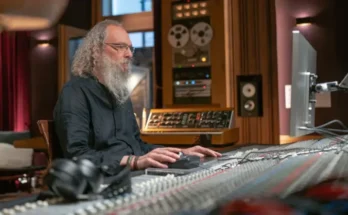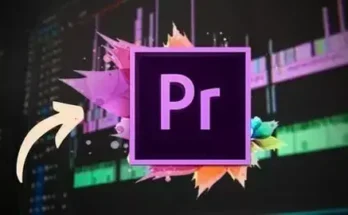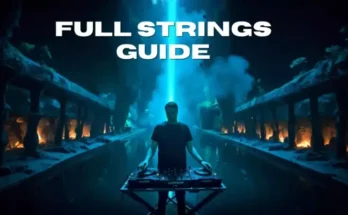P2P | 02 May 2019 | 987 MB
A great rhythm player creates the launching pad for singers and soloists and really makes the difference between a mediocre performance and a truly memorable one. In this Rhythm Edition of TrueHeart Blues, Kirk Fletcher shares many of his philosophies, master techniques, and creative approaches on comping and rhythm playing when working in a band context.
”Kirk Fletcher fires off soulful, straight-from-the-heart solos that dazzle on big stages… Fletcher also blows people’s minds when he’s playing rhythm guitar.” – Guitar Player Magazine
Widely considered one of the best blues guitarists in the world, Kirk has commanded the respect and acclaim of critics, peers, and fans across the globe. He is a four-time Blues Music Award and a 2015 British Blues Award nominee and has played with a variety of popular artists, including Joe Bonamassa and a three-year role as the lead guitarist of The Fabulous Thunderbirds. Kirk’s latest album, “Hold On” was nominated for Best Contemporary Blues Album of 2019 in the Blues Music Awards.
We’re thrilled to welcome Kirk to the family with his TrueFire course, TrueHeart Blues: Rhythm Edition. You will likewise be thrilled when you pull out Kirk’s comping and rhythm moves at your next jam or rehearsal!
”Throughout this Rhythm Edition of TrueHeart Blues, I’ll demonstrate and break down many of my favorite grooves, left and right-hand techniques, how to use space in your rhythm parts, how to rhythmically tie chords together with single note lines, some of my go-to muting ideas, and how to effectively single out specific notes in a chord.
Working with backing tracks, we’ll also play our way through 10 rhythm performances across a variety of feels, tempos, and keys. We’ll cover Texas harmonica shuffles, shuffles in the style of Sonny Boy and Jimmy Rogers, some funky shuffles, some of my own songs, and much much more.
”
You’ll play your way through Kirk’s curriculum digging into a series of 10 rhythm performance studies right from the start. Along the way, Kirk passes on key techniques and insight a variety of topics including The Right Hand, Left Hand Muting Approach, Call and Response, Pocket and Laying Back, Chord Embellishments, Listening for Your Part, Listening and Influences, and much more.
The 10 rhythm performance studies span a variety of blues feels, keys and tempos. Kirk will overview each backing track and feel, and then perform the rhythm parts over the track. After the performance, Kirk breaks down the rhythm parts emphasizing the approaches and techniques in play.
Dupree Groove in E
”This performance study is my tribute to the late great Cornell Dupree. The main riff is using call and response and it’s time to get funky as I play the song down. Make sure to keep an eye on the right hand! Many concepts are covered in the breakdown: I’ll discuss keeping a loose right hand, singling out certain notes in the chords and slight bends to the chords. I’ll also talk about using open strings and left-hand muting.”
Two Steps Forward Ab
”Attitude is the name of the game here! Let’s look at one of my latest tunes in this performance study. The right and left-hand muting play a big part in this lesson. I’ll perform this song to give you a sense of the groove and feel. We’ll break down each part of the song. I’ll talk about using force with the right hand while letting certain notes in the chord ring out. Also, we’ll look at doubling the bass line to add attitude.”
El Medio Stomp
”This performance study is a rocking tune from a few years ago that has become somewhat of a trademark of mine. In some ways, this song is a tribute to the great Stevie Ray Vaughan, married with a soul vibe. In the breakdown, I cover double stops, slight bends, and further address the call and response. More muting will be addressed.”
Kirk’s Slow Blues
”In this performance study, we’ll talk about how I approach a slow blues. One thing to consider is varying it depending on the band size. I refer to it as my “bread and butter” slow blues groove. One thing that’s had a big influence on my slow blues rhythm playing was growing up playing Gospel music. We’re focusing in on playing a rhythm that creates a nice bed and how to swing the parts. I’ll show you a rhythm part that somewhat continues motion to create a nice pad for the singer or soloist. Sort of like what you would hear from an organ player.”
Butt Rockin’ Shuffle in E
”In this performance study, I give you the bread and butter groove found in modern Texas blues. Think Fabulous Thunderbirds, SRV, ZZ Top, Johnny Winter! In this performance, it’s important to add swagger and attitude to your rhythm parts. At the same time, you have to keep a relaxed right hand. I break down right and left-hand muting. I’ll give you different examples of this groove and show you how to use all downstrokes for more attitude.”
Mr Rogers Groove G Capo
”In this performance study, I talk about the great Chicago bluesman Jimmy Rogers. Get your capo ready and lets visit the Windy City! We’ll play in the style of Chicago bluesman Jimmy Rogers and go over some of the things I did in the previous performance here: fingerstyle, the illusion of two parts, using a capo and little pick up notes in the chords to name a few.”
Shoe On The Other Foot Groove C
”In this performance study, I’ll talk about a funky blues and talk about some of the musicians I heard play this groove. It’s my way of joining a New Orleans groove and a Bo Diddley beat together. Time to get funky! Here we’re using a call and response technique in a funky context. It’s all about finding your space in the groove on this one. I talk about the importance of the right hand and targeting certain notes in the chords and what I feel really makes this groove really feel good.”
Kirk’s Signature Shuffle
”In my opinion, the shuffle is the essence of the blues. In this performance study, I share with you some of the concepts I’ve picked up over my 25 years of playing the shuffle. In this performance, I’ll give you a chance to see how I play a shuffle in context. I use simple chord shapes to add impact. I cover how to make the rhythm parts swing. I also talk about really getting parts engrained in your mind.”
Sonny Boy Groove in A
”This groove is so important to what we think of as modern blues. It incorporates a swing feel as well giving you another option when playing a shuffle. We put the emphasis on swinging the part and keeping the whole part relaxed. I’ll chop up the left-hand part and show you what I’m doing there, and we’ll talk about the great bluesmen that played in this style.”
Little Sadie Groove in Bb
”This groove is Chicago blues at it’s finest. It’s one of the most popular grooves in this style. In this performance study, I show you the groove and feel of this lesson. Keep in mind, you have to stay relaxed! I talk about right and left-hand ideas as well as muting/call and response. We’ll also go through a few variations on the groove.”
Kirk will explain and demonstrate all of the key concepts and approaches along the way. You’ll get standard notation and tabs for each of the performances. Plus, Kirk includes all of the backing tracks for you to work with on your own. In addition, you’ll be able to loop or slow down any of the videos so that you can work with the lessons at your own pace.
Grab your guitar and let’s find our own ‘trueheart’ with Kirk Fletcher!
[toggle title=”Home page”]https://tinyurl.com/y5b2zxxd[/toggle]

http://alfalink.to/cb4d02509b87b9e10a46
Please REPORT in Comment Broken Links




